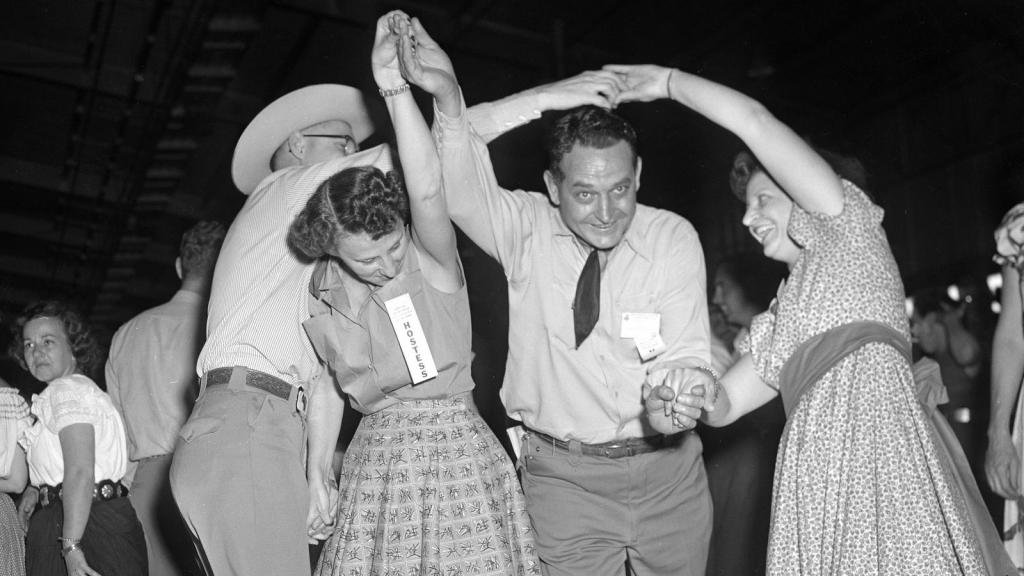Square dancing is a folk dance developed in America from adaptations of the English running sets and the stately French cotillion which later developed into the less formal quadrilles, and in America, the Virginia Reel.

In square dancing four couples are in square formation, dancing always as a group. Under the direction of a caller, or as he was formerly known, a prompter, they perform intricate figures and patterns, often changing partners, to the rhythm of stringed instruments playing lively tunes.
The old-time square dancing of the Ozarks brought here by early settlers from the mountains of eastern Tennessee and Kentucky followed the basic folk pattern. The old way was to have each of the four couples in turn lead the others in the same dance. Couple number one would go as directed by the caller to other couples in turn to “Take a Little Peek” or lead the others in the “Wild Goose Chase.” Then couple number two would lead in the same call, going to the other three couples in turn. Depending on the dance, sometimes couples would stand for periods of time doing nothing, waiting their turn while the other couples were dancing. The jig step which is characteristic of some dancing in this area, probably developed as a way of participating or filling the time so that everyone was dancing all the time.
Square dancing in more recent years, especially Western style, involves all dancers most of the time and has developed some more involved patterns and movements. However, the dances usually do not last as long nor allow dancers as much individuality. The old time way, with each couple taking turns leading and going through several variations, could last twenty minutes if the caller had an energetic group. Also, to vary the dance a caller with experienced dancers might call a different dance for each couple. Couple one might do “Cowboy Loop,” couple two “Sally Goodin,” couple three “Roll the Ball” and couple four “Form a Star” with a variety of figures between the couples. (Mulrenin & Saeger, n.d.)
Traditional square dance can be distinguished from modern Western square dance by the following characteristics:
- A limited number of basic movements, or “calls,” enabling the average dancer to join the group by assimilation rather than by taking a series of lessons.
- Dance figures (sequences of basic movements) that are called in a set order and repeated, rather than improvised by the caller. (In Southeastern style the caller chooses figures from a repertoire of a dozen or two and can call them in any order, but the order of movements within each figure does not change.)
- The use of live music as the norm.
In addition, because there is no governing body to set standards for traditional square dancing, each caller decides which basic movements and dance figures he or she will use. There are regional variations in how dancers execute the basic movements, usually having to do with hand or arm position. The same dance figure may have different names in different regions; the same name may refer to different dance figures, or even different basic movements. This lack of standardization does not present a problem to the dancers, because at least one of two conditions is always true: either the caller walks the dancers through the figures before calling them to music, or the event is attended almost entirely by local people familiar with that caller’s repertoire (Wikipedia, n.d.).

Soco Gap Junior Square Dance Team dancing at the Mountain Music Festival, Asheville, North Carolina. [between 1938 and 1950] from Library of Congress, LC-DIG-ppmsc-00460 